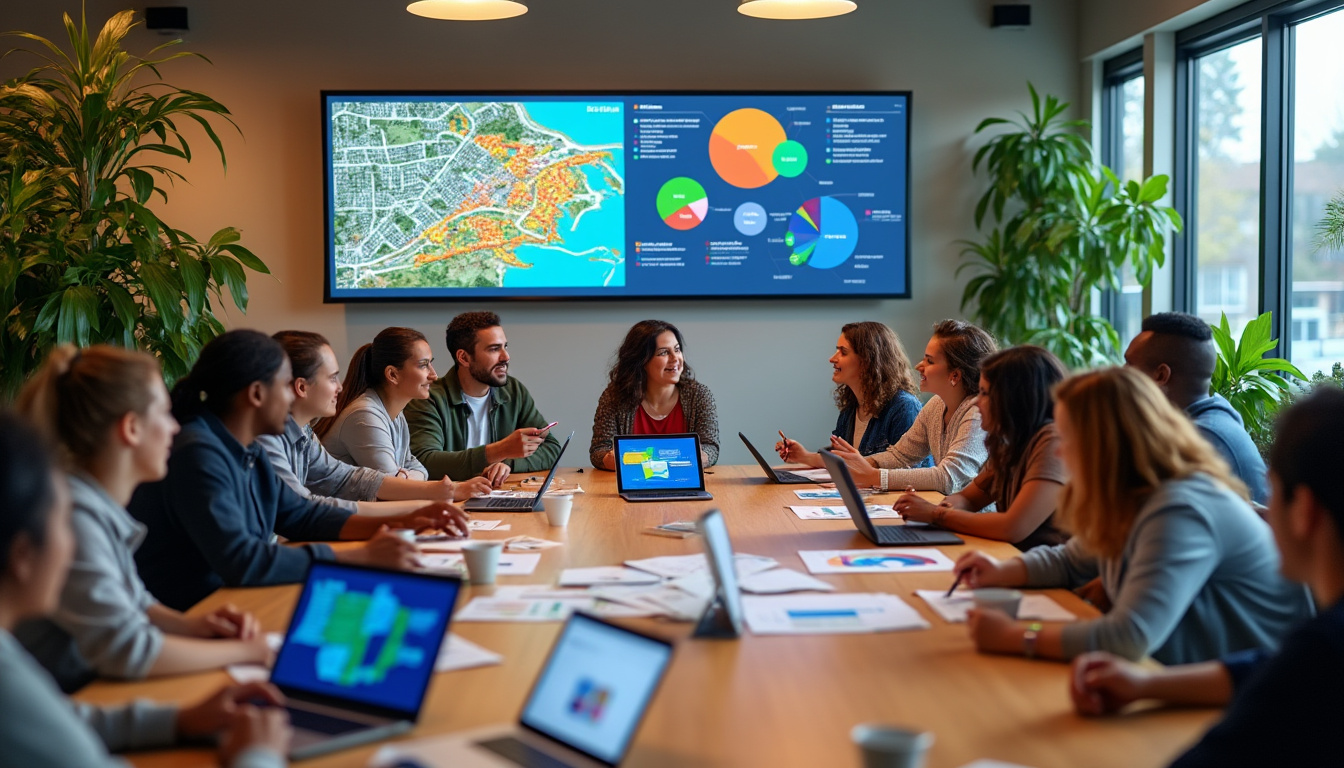Citizen participation in planning processes is more essential than ever. Faced with contemporary challenges, local authorities are seeking to strengthen resident involvement through innovative digital tools. These technological advances open the door to a more active and transparent form of democracy. By integrating technology into participatory processes, it becomes possible to reach a wider audience, include often underrepresented voices, and transform the way citizens interact with decisions that affect them. This article explores how these digital tools promote citizen engagement and best practices to maximize its impact.
The Challenges of Citizen Participation in Planning Processes
Citizen participation is crucially important in planning processes. Indeed, involving citizens not only enriches public debate but also ensures that decisions truly reflect the needs and concerns of communities. In this context, digital tools present themselves as potential catalysts for expanding this participation. Importance of Inclusion in Planning
Traditionally, planning processes can be dominated by well-organized interest groups, leaving marginalized populations behind. These populations may feel excluded from discussions that directly affect them. According to the Puget Sound Regional Council, many standard engagement methods fail to reach certain groups, particularly those historically underrepresented in public planning efforts. Therefore, an inclusive approach is imperative. This could involve:
Making consultations accessible to all.
- Using digital platforms to reach a wider audience.
- Creating constructive feedback from citizen contributions.
- Digital tools can play a key role here, facilitating access and reducing barriers to participation.
Impact of Digital Tools on Citizen Participation
Digital tools are helping to transform the way citizens engage in planning processes. Using these technologies, local authorities can implement a variety of methods to interact with citizens, fostering constructive and collaborative exchanges.
Here are some examples of digital tools that can improve participation:
Online survey platforms:
- These tools allow for the collection of opinions on strategic issues in real time. Interactive maps:
- These allow citizens to visualize projects and express their concerns about specific areas. Virtual events:
- These online meetings facilitate access for those who cannot physically attend consultations. These tools pave the way for a more inclusive democracy, where every citizen can become a full agent of change. Best Practices for Successful Digital Participation
For the use of digital tools to be truly effective, it is crucial to adopt certain best practices that will foster a constructive exchange between planning stakeholders and citizens. This involves clearly understanding the needs of the population and adapting the tools accordingly.
Overcoming Barriers to Participation
One of the first steps to consider is removing barriers to engagement. This may include:
Language Accessibility:
Offering translations into the main languages spoken in the community.
- Digital Accessibility: Offer alternatives for those without access to digital devices, for example, by making public computers available.
- Clarity of information: Use plain language and attractive visuals to make content accessible to all.
- These practices are essential to ensure the participation of all segments of society. Successful examples of digital engagement
There are numerous examples of communities that have established best practices in digital engagement. Consider the case of the City of Mountlake Terrace, which implemented a public participation plan that included translations into multiple languages. This enabled historically underrepresented groups to actively participate.
Another example is the Louisville platform, which introduced digital tools to trigger deeper civic engagement through interactive surveys and discussion forums.
Innovative digital tools for participatory planning
In 2025, technological innovations continue to emerge, offering new ways to integrate citizens into planning processes. The use of simulators and 3D models allows citizens not only to visualize projects in context, but also to actively participate in their development. 3D Modeling and Urban SimulationsTools such as ArcGIS CityEngine and Esri’s Geodesign Tools make planning more immersive. For example, ArcGIS CityEngine allows residents to create 3D visualizations of proposed projects, helping them better understand what their transformed environment will look like.
These tools are not limited to simple visualizations; they also allow citizens to provide feedback on the potential impact of planning decisions. This fosters a rich and constructive dialogue.
Interactive Maps and Feedback Platforms
Interactive maps are emerging as powerful tools for citizen engagement. They allow residents to raise specific concerns at specific locations. For example, platforms like Snohomish County offer a range of interactive tools to explore data on areas related to infrastructure and development.
Here are some features of these interactive maps that make their use compelling:
Annotation capability:
Users can add comments and questions directly on the map.
Real-time data: Updated information encourages continuous project monitoring. Collaboration:
Allows users to exchange ideas and concerns on common issues.
- Measuring impact and ensuring ongoing dialogue Once digital tools are in place, it is essential to monitor their effectiveness and impact on citizen engagement. This requires a systematic approach to assessing how these tools influence citizen engagement. Metrics and Feedback: The Keys to Evaluation
- Local authorities can measure the effectiveness of their digital engagement initiatives through various indicators: Response Rate:
- Measure the number of participants in surveys and consultations. Quality of Contributions:
Evaluate the depth and relevance of the comments received.
Evolution of Engagements:
Observe how the participation rate evolves over time.
This data can guide decisions to improve participatory approaches and strengthen the inclusiveness of processes.
- Strategies for Maintaining Open Dialogue To ensure continued participation, it is essential to keep the line of communication with citizens open. This can include:
- Regular Meetings: Organize discussion sessions to gather feedback on ongoing initiatives.
- Process transparency: Regularly publish reports on the impact of citizen contributions.
Create working groups:




